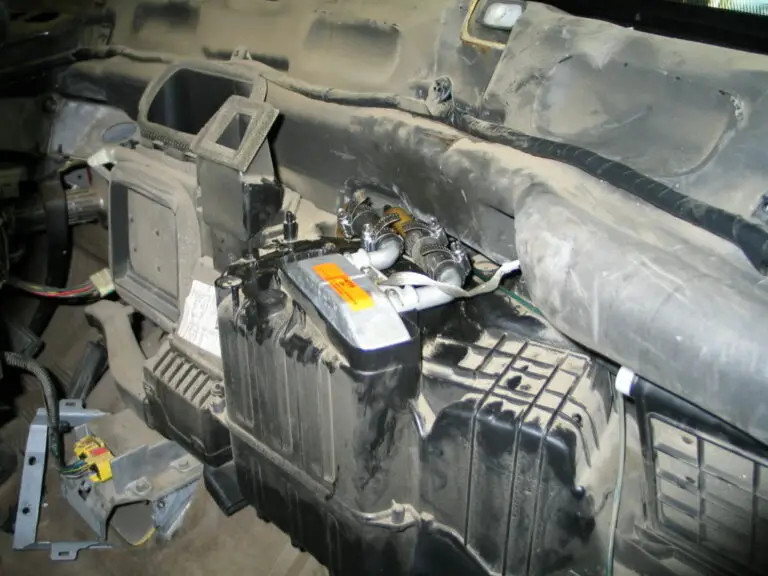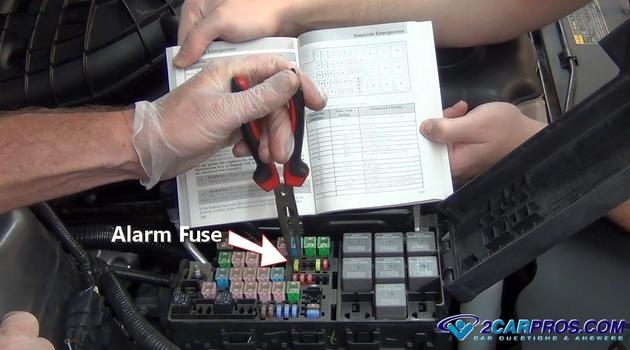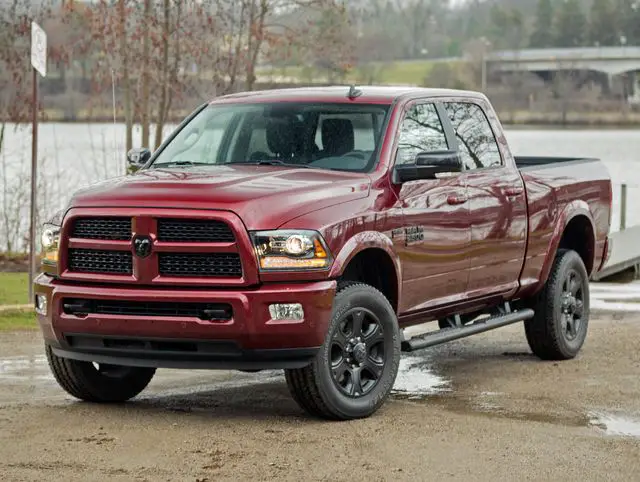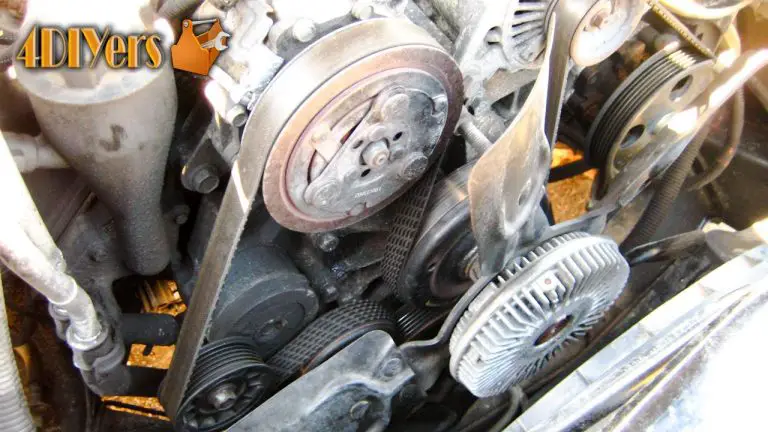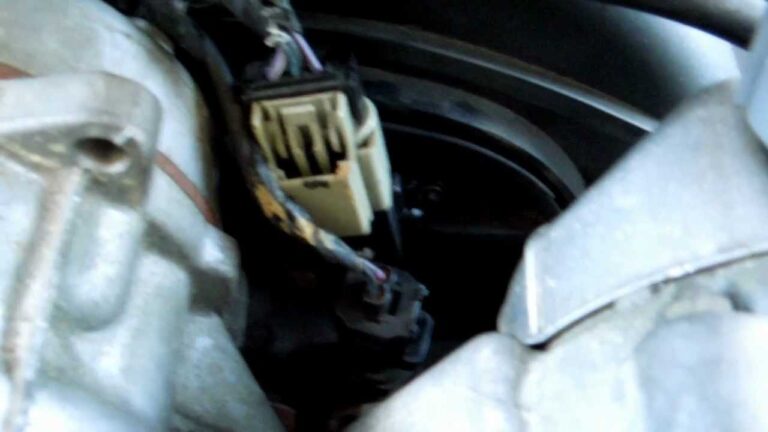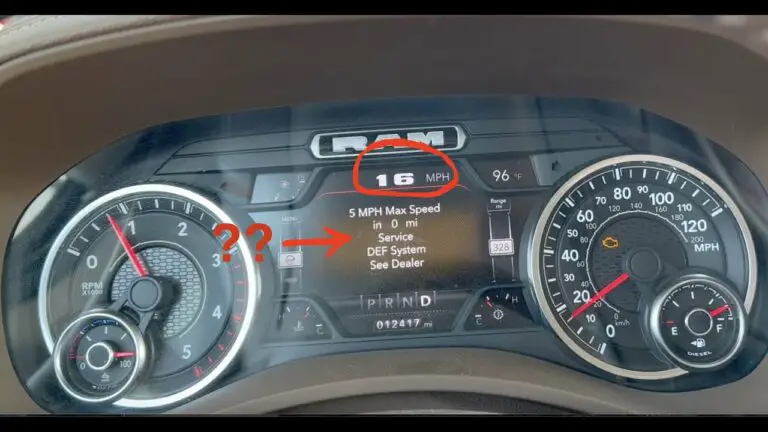Dodge Ram PCM Replacement: 5 Hacks for Perfect Fixes!
Experiencing unexpected issues with your Dodge Ram can be both frustrating and puzzling. Often, the culprit behind these vehicular mysteries is a small but mighty component: the Powertrain Control Module (PCM). Fear not, as this guide is crafted to demystify the process of diagnosing and replacing your Dodge Ram’s PCM, ensuring you’re back on the road in no time.
In this comprehensive guide, we’ll navigate through:
- Understanding Your Dodge Ram’s PCM: Delving into what a PCM does and its critical role in your truck’s operation.
- Recognizing the Signs: Identifying the symptoms of a failing PCM and how to diagnose them accurately.
- Preparing for Replacement: Gathering the right tools and choosing the best PCM for your Dodge Ram.
- The Replacement Process: Provide a detailed, step-by-step guide to removing the old PCM and installing the new one.
- Ensuring Success: Tips for testing and troubleshooting post-replacement to guarantee a smooth ride.
Join us as we unravel the complexities of Dodge Ram PCM replacement, transforming this daunting task into a manageable and successful endeavor. Your journey to becoming a PCM pro starts here!
Section 1: Understanding Your Dodge Ram’s PCM
What is a PCM and Why It Matters
The Powertrain Control Module (PCM) is the brain of your Dodge Ram, responsible for managing the engine and transmission’s various functions. It’s a sophisticated piece of technology that ensures your vehicle runs efficiently and reliably. By monitoring and adjusting engine and transmission operations, the PCM plays a crucial role in your truck’s fuel efficiency, performance, and emission control. In essence, a well-functioning PCM is key to the overall health of your Dodge Ram.
PCM vs. ECM
While often used interchangeably, the PCM and Engine Control Module (ECM) are not the same. The ECM is solely focused on engine management, whereas the PCM covers a broader spectrum, controlling both the engine and the transmission. Understanding this distinction is vital, as it affects the troubleshooting and replacement process.
Signs of a Faulty PCM
A failing PCM can manifest in various ways, often mimicking other mechanical issues, which makes accurate diagnosis essential. Common signs include:
- Unexpected Check Engine Lights: Frequent and unexplained warnings are often the first sign.
- Erratic Behavior: This includes sudden stalling, poor fuel economy, or difficulty starting the engine.
- Transmission Issues: Unexpected shifting or failure to shift, indicating the PCM isn’t managing the transmission correctly.
- Performance Decline: Reduced power, acceleration, or efficiency can all point to PCM problems.
Understanding these symptoms is the first step in diagnosing a PCM issue. However, these signs can also indicate other problems, so a thorough diagnosis is crucial before proceeding with a replacement.
Diagnosing PCM Issues
Before you consider replacing the PCM, it’s essential to diagnose the issue accurately. This typically involves:
- Error Codes: Using an OBD-II scanner to read any diagnostic trouble codes (DTCs) stored in the PCM. These codes provide insight into what’s going wrong.
- Visual Inspection: Checking the PCM and its connections for signs of damage, corrosion, or loose wires.
- Professional Diagnosis: Sometimes, the complexity of PCM issues necessitates professional diagnosis. This ensures that the PCM is the root cause and not another component.
Understanding the role of the PCM, distinguishing it from similar components, recognizing the signs of malfunction, and knowing how to diagnose issues are all critical steps. This foundational knowledge ensures you’re well-prepared to tackle the replacement process, ensuring your Dodge Ram operates at its best.
Preparing The Dodge Ram for PCM Replacement
Before diving into the replacement of your Dodge Ram’s Powertrain Control Module, proper preparation is key. This not only ensures a smoother process but also helps prevent any potential issues. Here’s how to set the stage for a successful PCM replacement.
Tools and Materials Required
Having the right tools at hand is essential for an efficient replacement process. Here’s what you’ll typically need:
- OBD-II Scanner: For diagnosing error codes and ensuring the new PCM communicates properly with your vehicle.
- Basic Hand Tools: Including screwdrivers, pliers, and a socket set.
- PCM Connector: Ensure you have a clean, corrosion-free connector for a secure fit.
- Anti-Static Wrist Strap: To prevent static electricity from damaging the PCM.
Using quality tools can make a significant difference in the ease of installation and the longevity of the repair. Cheap tools might not provide the precision or durability required for such a delicate task.
Choosing the Right PCM
Not all PCMs are created equal. Selecting the right one is crucial for compatibility and performance.
- OEM vs. Aftermarket: OEM (Original Equipment Manufacturer) parts are designed specifically for your vehicle and generally offer a guarantee of quality and compatibility. Aftermarket parts can be less expensive and offer more variety but might vary in quality and fit.
- Compatibility: Check the part number and software requirements. The PCM must be compatible with your Dodge Ram’s specific model, year, and engine type.
- Warranty and Support: Look for a PCM with a warranty and technical support. This can be invaluable if you encounter issues during or after installation.
While it might be tempting to go for the cheapest option, remember that the PCM is the brain of your vehicle. Investing in a quality, compatible PCM will pay off in the long run in terms of reliability and performance.
I understand. Here’s a more detailed approach to the sections, particularly focusing on explaining how to perform specific tasks like disconnecting the battery and other critical steps in the PCM replacement process.
Step-by-Step Dodge Ram PCM Replacement Guide
Step 1: Safety First
Safety is crucial when working on your vehicle’s electrical system. The first step is to disconnect the battery to prevent any electrical shorts or shocks.
- How to Disconnect the Battery:
- Locate the Battery: Open the hood and find the battery, usually on one side of the engine bay.
- Identify the Negative Terminal: Look for the negative (‘-‘) terminal, often marked with black or a minus symbol.
- Disconnect the Negative Terminal: Using a suitable wrench (often 10mm for most vehicles), turn the bolt counterclockwise to loosen the clamp on the negative terminal. Once loose, carefully lift the clamp off the terminal.
- Secure the Cable: Ensure the disconnected cable end is placed away from any metal or the positive terminal to prevent accidental electrical contact.
Always disconnect the negative terminal first to minimize the risk of shorting the battery. This is a fundamental step in any vehicle maintenance to ensure your safety and protect the vehicle’s electrical system.
Step 2: Accessing the PCM
Locating and accessing the PCM is your next task. Its position can vary, so consulting your vehicle’s service manual is essential.
- How to Locate and Access the PCM:
- Consult the Manual: Find the exact location of the PCM in your Dodge Ram’s service manual. It’s typically in the engine compartment or under the dashboard.
- Remove Obstructions: If any components like the air filter housing or engine cover obstruct access to the PCM, use the appropriate tools (usually just a screwdriver or wrench) to remove them.
Keep a methodical approach when removing parts to access the PCM. Label or take pictures of everything you remove to ensure a smooth reassembly process.
Step 3: Removing the Old PCM
With access to the PCM, you can now proceed to remove it. This involves disconnecting it from the wiring harness and unmounting it from its position.
- How to Remove the Old PCM:
- Disconnect the Electrical Connectors: Press down on the tab or clip securing the connector to the PCM and gently pull the connector out. If it’s tight or difficult to remove, gently wiggle it back and forth while pulling.
- Unscrew the PCM: Remove any screws or bolts holding the PCM in place. Keep these safe as you’ll likely use them to install the new PCM.
Be gentle when handling the PCM and its connectors. Forceful pulling or rough handling can damage the wiring or the PCM itself.
Step 4: Installing the New PCM
Installing the new PCM involves carefully placing it in the same position as the old one and ensuring all connections are secure.
- How to Install the New PCM:
- Position the New PCM: Place the new PCM in the exact position as the old one. Align any mounting holes with the corresponding spots on the vehicle.
- Secure the PCM: Use the screws or bolts you removed earlier to secure the new PCM in place. Don’t over-tighten, but ensure it’s snug and secure.
- Reconnect Electrical Connectors: Reattach all previously disconnected connectors. Ensure they click into place and are fully seated.
Double-check all connections for security and proper fit. A loose connector can lead to erratic vehicle behavior or a non-functioning PCM.
Step 5: Testing the New PCM
After installation, testing the new PCM is vital to confirm that it’s functioning correctly and communicating with the vehicle’s systems.
- How to Test the New PCM:
- Reconnect the Battery: Carefully reattach the negative cable to the negative terminal of the battery and tighten the clamp. Ensure a good connection.
- Start the Vehicle: Turn on the ignition and observe any dashboard lights or unusual behaviors.
- Use an OBD-II Scanner: Connect the scanner to check for any error codes and ensure the PCM is communicating correctly with the vehicle.
- Test Drive: Drive the vehicle under various conditions to ensure it performs as expected.
Be patient and thorough during the testing phase. Addressing any issues now can prevent future problems and ensure a long life for your new PCM.
You can read also: Dodge Journey Problems: 2009 To 2020
Dodge Ram PCM Post-Replacement Steps
After replacing the PCM in your Dodge Ram, a few critical steps remain to ensure everything is functioning correctly. This section covers what to do after the installation to verify the success of your work and maintain the longevity of your new PCM.
Testing the New PCM
Properly testing the new PCM is crucial to ensure it’s functioning as expected and interacting correctly with your vehicle’s systems.
- Perform an Initial Check: Start your Dodge Ram and observe. The check engine light should go off after a few seconds. If it stays on, use an OBD-II scanner to check for codes.
- Idle Test: Let the engine run for a while. A stable idle without strange noises or fluctuations indicates a successful installation.
- Take a Test Drive: Drive in various conditions. Pay attention to the engine’s responsiveness, shifting (if automatic), and any unusual behavior.
Don’t rush this process. Taking the time to thoroughly test the new PCM can save you from future headaches and ensure everything is working perfectly.
Troubleshooting Common Issues
Even with a successful installation, you might encounter some issues. Here’s how to troubleshoot common problems:
- Persistent Error Codes: If the check engine light stays on, recheck all connections and ensure they’re secure. If the problem persists, the PCM might need additional programming or configuration.
- Poor Performance or Economy: This might indicate the PCM needs to ‘relearn’ the engine’s behaviors. Some vehicles require a relearning process after PCM replacement, which can involve specific driving patterns or using diagnostic tools.
Keep a detailed log of any issues you encounter and how you resolve them. This can be incredibly helpful for future diagnostics or if you need to seek professional help.
Maintenance and Care
Proper maintenance and care are essential to ensure the longevity and performance of your new PCM. This section provides tips and best practices to keep your PCM and Dodge Ram running smoothly.
Regular Maintenance Tips
Regular maintenance is key to keeping your PCM and vehicle in top condition.
- Keep It Clean: Ensure the PCM and surrounding areas are free from dust and debris, which can cause overheating or interference.
- Check Connections: Periodically check the PCM’s connections for corrosion or looseness, particularly after driving in harsh conditions.
- Battery Health: A stable, healthy battery is crucial for PCM function. Regularly check your battery’s condition and voltage.
Integrating these checks into your regular vehicle maintenance routine can prevent issues and extend the life of your PCM.
Understanding the Impact of Modifications
Modifications to your Dodge Ram can impact the PCM’s performance.
- Aftermarket Parts: Be aware that certain aftermarket modifications can affect how the PCM interacts with other vehicle systems. Always ensure compatibility before making significant changes.
- Tuning and Performance Chips: While tuning can enhance performance, it can also strain or confuse the PCM if not done correctly. Always use reputable sources and understand the potential impacts.
Any modification should be considered carefully. While they can enhance performance, they should always be balanced with the potential risks to your vehicle’s systems, including the PCM.
Maintenance and Care
Maintaining your Dodge Ram’s PCM is crucial for the longevity and performance of your vehicle. Regular attention and care can prevent issues and ensure your truck runs smoothly. Here’s how to maintain your PCM and understand its impact on your truck’s performance and fuel economy.
Regular Maintenance Tips
Regular checks and maintenance can keep your PCM and truck in top condition, preventing unexpected breakdowns and costly repairs.
- Keep the PCM and Area Clean: Ensure the area around the PCM is free from dirt, debris, and moisture. A clean environment reduces the risk of electrical issues and overheating.
- Check for Corrosion and Damage: Regularly inspect the PCM and its connectors for signs of corrosion or damage. Addressing these issues promptly can prevent more significant problems.
- Ensure Good Battery Health: The PCM requires a stable voltage to operate correctly. Regularly check your battery’s health and ensure it’s charged and functioning well.
- Software Updates: Occasionally, manufacturers release software updates for the PCM to improve performance and fix bugs. Check with a dealer or qualified technician to ensure your PCM’s software is up to date.
Incorporating these maintenance checks into your regular vehicle care routine can significantly extend the life of your PCM and improve the overall health of your Dodge Ram.
Fuel Economy and Performance Tuning
The PCM plays a critical role in managing your truck’s fuel economy and performance. Understanding how it impacts these areas can help you make informed decisions about tuning and modifications.
- Understanding PCM Tuning: PCM tuning involves updating the software to change how the engine runs. This can improve performance, fuel economy, or both. However, it’s crucial to understand the implications and ensure any changes are compatible with your vehicle.
- Performance Chips and Modules: These devices modify the PCM’s instructions to the engine, often increasing power or efficiency. While they can provide benefits, they can also strain the engine or other components if not used properly.
- The Impact on Fuel Economy: The PCM’s management of engine timing, fuel injection, and other factors directly affects fuel economy. Proper maintenance and sensible driving can optimize these settings for better fuel efficiency.
Modifications and tuning should be approached with caution and ideally performed by professionals. Improper changes can lead to reduced performance, increased wear, or even damage.
Cost and Professional Services
Understanding the costs involved and finding the right professional services are crucial when considering a PCM replacement. Here’s a breakdown of what to expect in terms of expenses and how to find a qualified technician to do the job.
Cost of PCM Replacement
The cost of replacing a PCM can vary widely based on several factors, including the make and model of your vehicle, the cost of the part itself, and labor charges.
- Part Costs: A new PCM can range significantly in price, depending on whether you choose an OEM part or an aftermarket option. OEM parts are typically more expensive but offer assurance in terms of compatibility and performance.
- Labor Costs: The complexity of the installation can affect labor costs. Some vehicles allow relatively easy access to the PCM, while others may require more extensive disassembly.
- Additional Expenses: Consider the potential need for towing, diagnostics, and post-replacement programming, which can all add to the total cost.
Get a detailed quote from your technician before proceeding. Understanding the breakdown of costs can help you make informed decisions and avoid surprises.
Finding a Qualified Technician
The expertise of the technician is crucial for a successful PCM replacement. A well-qualified professional can ensure the job is done correctly and efficiently.
- Certifications and Experience: Look for technicians with certifications from reputable organizations. Experience specifically with Dodge Ram or similar vehicles is a plus.
- Reputation and Reviews: Check online reviews and ask for recommendations from friends or family. A good reputation in the community is a strong indicator of quality service.
- Ask Questions: Don’t hesitate to ask potential technicians about their experience with PCM replacement. A trustworthy professional will be transparent about their skills and experience.
Choosing the right technician is as important as choosing the right part. Investing time in finding a skilled professional can save you money and hassle in the long run.
Warranty and Legal Considerations
When dealing with important components like the PCM in your Dodge Ram, it’s crucial to understand the warranty and legal aspects. This knowledge can protect you from unexpected costs and ensure you’re making informed decisions.
Warranty Information
Most new PCMs come with some form of warranty, but understanding the specifics is essential.
- OEM Warranty: If you opt for an OEM PCM, it’s likely to come with a manufacturer’s warranty. This typically covers any defects in materials or workmanship for a certain period.
- Aftermarket Warranty: Aftermarket PCMs also usually come with warranties, but the terms can vary widely. Be sure to read the fine print to understand what’s covered.
- Keep Documentation: Always keep your purchase receipts and warranty information. If you encounter issues while the PCM is under warranty, this documentation will be crucial for making a claim.
Understanding your warranty can save you significant money if something goes wrong. Ensure you’re clear on what’s covered and for how long.
Recall Information
Automotive recalls are issued when a manufacturer determines that a vehicle model has a safety-related defect or doesn’t comply with federal safety standards.
- Check for Recalls: Regularly check for any recalls that might affect your Dodge Ram, especially concerning the PCM. The National Highway Traffic Safety Administration (NHTSA) website is a good resource for this.
- Recall Procedures: If there’s a recall, the manufacturer should fix the problem at no cost to you. Understand the steps involved in getting the necessary repairs done.
- Stay Informed: Even after replacing your PCM, stay informed about any future recalls. They can arise at any time and may impact your vehicle’s safety and performance.
Staying on top of recall information can not only keep you safe but also potentially save you from costly repairs. Always take recall notices seriously and follow up promptly.
Conclusion
Throughout this guide, we’ve navigated the complex yet critical world of Dodge Ram PCM replacement. A well-functioning PCM is vital for the performance, efficiency, and safety of your truck. Whether you’re considering a DIY approach or seeking professional help, being informed is your greatest tool.
Remember, taking care of your PCM through regular maintenance, being aware of warranty and recall information, and understanding the impact of modifications can significantly contribute to your Dodge Ram’s longevity and reliability.
We encourage you to take action with the knowledge you’ve gained, ensuring your truck continues to serve you well on the road ahead. Your journey to a smoother, more reliable ride begins here. Safe travels and happy driving!


